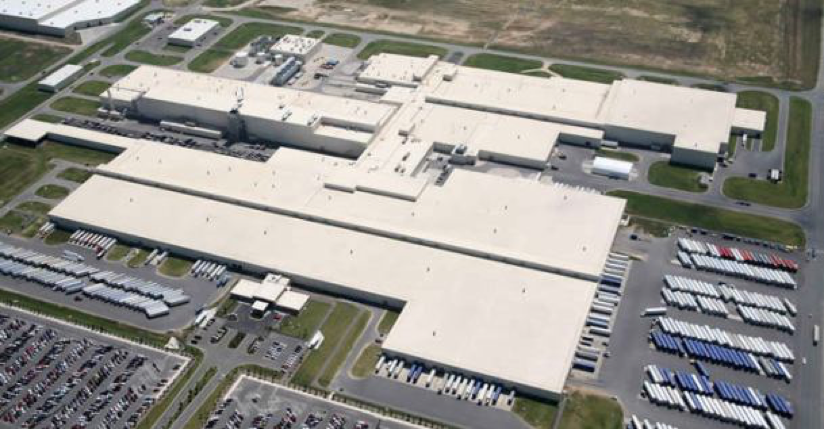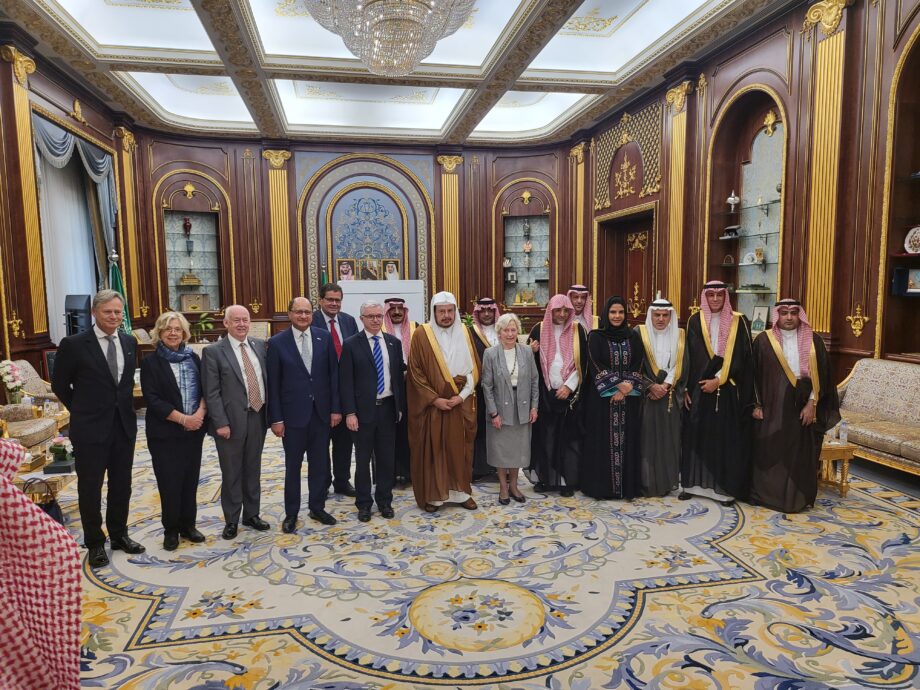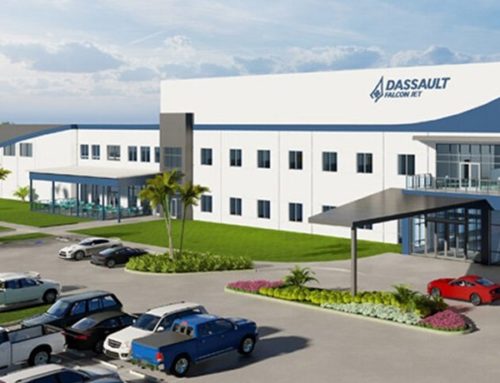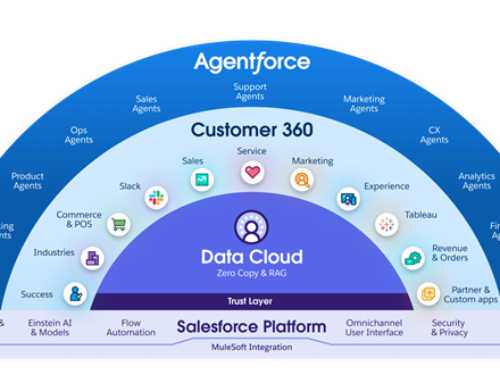1. Intix in Canada: A New Chapter in Transaction Data Management
In a significant move that underscores its global outlook, Intix, the renowned transaction data management solution provider, has announced plans for further expansion into the Canadian market. This strategic decision aims to provide more effective support to financial institutions in Canada, a country currently undergoing a massive transformation in its payments ecosystem.
Intix’s unique transaction data management platform, which is already empowering some of the world’s leading financial institutions, including FIS and Clearstream, is set to bring about a paradigm shift in the way Canadian businesses trace, track, and understand transactions. The platform consolidates and aggregates vast volumes of data, providing users with the ability to derive actionable insights from a single interface.
As part of its expansion strategy, Intix will be participating in the upcoming Canada Payments Summit, scheduled to take place at the Beanfield Centre in Toronto. This event will serve as a platform for Intix to connect with thought-leaders in payment transaction data across Canada and accelerate its expansion efforts.
Stay tuned as we delve deeper into how Intix’s expansion plans are set to revolutionise the Canadian financial landscape.
Possible challenges
Intix, like other fintech companies, may face several challenges in the Canadian market:
1. Regulatory Landscape:
The regulatory environment in Canada is evolving, and fintech companies need to keep pace with these changes. Regulatory hurdles can be difficult to overcome, but once they are, fintech companies may have an advantage due to the difficulty of market entry and the regulatory constraints on traditional financial services companies.
2. Established Financial Institutions:
Unlike in some other markets, the big banks in Canada are highly trusted by customers. This dynamic means fintech companies like Intix may need to explore opportunities to collaborate with these institutions, gaining access to established customer relationships, while also competing against them.
3. Access to User Data:
In Canada, regulators are still assessing the viability of open banking, which could make it challenging for fintech players to access critical user data. Canadian banks hold the keys to this data, making them appealing partners for fintech companies looking to launch their products.
4. Product Development and Sales:
Canadian fintech companies face challenges when it comes to developing and selling new products. The ecosystem needs to critically examine what’s currently working and what needs to change to help Canada become a global leader in fintech.
5. Customer Expectations:
Today, the focus for financial services organisations is on user experience¹. Customers have high expectations, and innovative fintech businesses are often better equipped than their traditional counterparts to meet and exceed these expectations.
These challenges, while significant, also present opportunities for growth and innovation. By understanding and addressing these challenges, Intix can position itself for success in the Canadian market.
Collaborations
Intix can collaborate with Canadian banks in several ways:
1. Data Sharing:
Intix can work with banks to gain access to transaction data, which can be used to enhance its services. This could be done under a secure and regulated framework that protects customer information.
2. Partnerships:
Intix can form strategic partnerships with banks to offer its services as part of the banks’ existing infrastructure. This could help banks improve their own services and provide customers with additional value.
3. API Integration:
Intix can integrate its services with banks through APIs. This would allow banks to use Intix’s platform within their own systems, providing a seamless experience for customers.
4. Joint Ventures:
Intix and banks can enter into joint ventures to develop new fintech solutions. This could lead to the creation of innovative products that benefit both parties.
5. Consulting Services:
Intix can offer consulting services to banks, helping them understand and navigate the complex world of transaction data management.
Examples
Several fintech companies have successfully collaborated with Canadian banks:
1. Borrowell:
This alternative lender has partnered with CIBC. Borrowell is also mentioned in a PwC report as an example of a fintech company that has benefited from collaborations with Canada’s established financial institutions.
2. TouchBistro:
This company, which provides point-of-sale systems for restaurants, has worked alongside JP Morgan.
3. Nest Wealth:
This robo-advisory firm has partnered with the National Bank of Canada.
4. Wealthsimple:
This online investment management service had assets under management worth $30 billion by 2024.
5. Koho and Mogo:
These mobile-enabled prepaid card issuers are part of the Canadian alternative financial services providers.
6. BTL:
This blockchain tech firm is also part of the Canadian alternative financial services providers.
These collaborations have allowed fintech companies to leverage the trust and customer base of established financial institutions, while the banks have benefited from the innovative technology and customer-centric approach of the fintech companies.
2. Toyota’s Half-Billion-Dollar Bet: Expanding the San Antonio Plant and Reinforcing Its Global Strategy

In a bold move that underscores its commitment to the U.S. market, Japanese automotive giant Toyota Motor Corp is reportedly planning a staggering $531.7 million investment in its existing plant in San Antonio, Texas. This significant investment is set to fund the expansion of the facility, increasing its size by more than 500,000 square feet. The expansion is not just about physical space; it’s also about human capital. The project is expected to create 411 new jobs, offering a base hourly wage of $20.54 and an average annual salary of about $68,000. This latest development is a testament to Toyota’s ongoing efforts to enhance its competitiveness and ensure long-term employment stability. As we delve deeper into this story, we’ll explore what this expansion means for San Antonio, for Toyota, and for the future of the automotive industry.
Expansion plans
Investment: Toyota is planning a $531.7 million investment in its existing plant in San Antonio, Texas.
Expansion: The investment will fund the expansion of the facility, increasing its size by more than 500,000 square feet.
New Jobs: The expansion is expected to create 411 new jobs.
Economic Incentives: Toyota is seeking an economic development incentive package worth $14.9 million, including a 10-year, 100% tax abatement worth $14.7 million and a $250,000 skills development grant.
Zoning Controversy: The expansion plans have sparked a controversy over zoning changes to 20,000 acres surrounding the Toyota plant. Landowners and developers argue that the plan to create a “buffer zone” for Toyota would stop them from building in a high-demand area.
Future Plans: Toyota has invested $4.2 billion in the San Antonio plant since 2003 and employs more than 3,700 workers at the facility, which began production in 2006. This expansion is part of Toyota’s ongoing efforts to enhance its competitiveness and ensure long-term employment stability.
Strategy
Toyota’s expansion of its San Antonio plant aligns well with its overall strategy in several ways:
1. Commitment to Quality and Innovation:
Toyota’s generic competitive strategy emphasises quality and innovation. The expansion allows Toyota to continue producing high-quality vehicles while also investing in innovative technologies and processes.
2. Cost Leadership:
Toyota aims to minimise production costs to attain cost leadership. The expansion of the San Antonio plant, with its increased capacity, can lead to economies of scale, thereby reducing per-unit costs.
3. Broad Differentiation:
Toyota seeks to develop business and product uniqueness to ensure its competitive advantage over other automakers. The expanded facility can support the development and production of unique vehicle models or features.
4. Growth Strategy:
Toyota applies intensive growth strategies to ensure its continued growth in markets worldwide. The plant expansion is a clear indication of this growth strategy, as it enables Toyota to increase its production capacity to meet growing demand.
5. Resilience:
Toyota’s Production System has proven to be resilient, helping the company ride out supply chain disruptions. The expansion of the San Antonio plant can further enhance this resilience by providing additional production capacity.
6. Customer-Centric Approach:
Toyota focuses on creating vehicles that meet and exceed customer expectations. The expansion can help Toyota better serve its customers by enabling it to produce more vehicles and potentially introduce new models.
7. Environmental Impact:
Toyota’s long-term strategy is based on reducing the environmental impact of its products and the way they are made. The expansion could include investments in more environmentally friendly production processes.
In summary, the expansion of the San Antonio plant is a strategic move that supports Toyota’s goals of quality, innovation, cost leadership, differentiation, growth, resilience, customer satisfaction, and environmental responsibility.
Global plans
Toyota operates a vast network of manufacturing plants across the globe. Here are some key locations:
1. Japan:
Toyota has numerous plants in Japan, including the Honsha Plant, Motomachi Plant, Kamigo Plant, Takaoka Plant, Miyoshi Plant, Tsutsumi Plant, Myochi Plant, Shimoyama Plant, Kinu-ura Plant, and Tahara Plant. These plants manufacture a wide range of vehicles and parts, from the Corolla and Prius to engines and powertrain-related parts.
2. North America:
Toyota has a significant presence in North America, with plants in the United States, Canada, and Mexico.
3. Europe:
Toyota’s European manufacturing activities continue to grow, including a factory in Russia that opened in 2005 to build Camry and RAV4 models.
4. Asia:
Toyota has plants in several Asian countries, including China and India.
5. South America:
Toyota also has plants in South America, including in Brazil.
6. Other Locations:
Toyota has other plants located across the globe, including in Africa and the Pacific.
These plants allow Toyota to build cars and trucks close to local markets, responding to the ever-changing needs of global customers.
3. Melbourne’s Green Revolution: Supercharging Clean Tech Growth

Dmitry Osipenko via Unsplash
As the world grapples with the urgent need for sustainable energy solutions, one city stands out as a beacon of hope: Melbourne. This bustling metropolis, known for its vibrant culture and iconic landmarks, is now making headlines for a different reasonits commitment to the energy transition.
Melbourne is not just embracing clean technology; it’s supercharging its growth. From innovative startups to established corporations, the city’s business landscape is buzzing with activity, all aimed at harnessing the power of renewable energy sources and reducing carbon emissions.
This article delves into how Melbourne is leading the charge in the energy transition, exploring the strategies, initiatives, and technologies that are propelling the city towards a sustainable future. Join us as we uncover the story of Melbourne’s clean tech revolution, a testament to human ingenuity and a model for cities worldwide.
Statistics
Certainly, here are some key statistics that highlight the growth and potential of Melbourne’s clean tech industry:
The clean tech sector has become increasingly important in recent years as awareness and concerns over the climate crisis have grown.
Global investments in energy transition technologies have almost tripled since 2015, and in 2022 exceeded one trillion U.S. dollars for the first time.
Renewable energy has historically received the largest proportion of funding, with more than two trillion U.S. dollars invested into the sector in the last decade alone.
In 2022, annual global investments in renewable energy reached a record high of almost 500 billion U.S. dollars, with solar PV investments accounting for roughly 60 percent of this total.
Electrified transportation was also a key area of investment in 2022, receiving almost as much as renewable energy.
Global VC funding in climate tech startups reached a high of 70.1 billion U.S. dollars in 2022.
These statistics underscore the significant strides Melbourne is making in the clean tech industry. The city’s commitment to renewable energy and sustainable practices is not only contributing to a greener future but also paving the way for economic growth and innovation.
Examples
Examples of Melbourne-based clean tech companies that are making significant strides in the industry:
1. A Cloud Guru:
Founded by two brothers from Australia, Sam and Ryan Kroonenburg, A Cloud Guru is a leader in online cloud certification training. The company has helped reskill some of the biggest companies in the world, including Dow Jones and Qualcomm. Their platform offers comprehensive and up-to-date learning libraries for cloud technologies. They have helped more than 2.2 million engineers and 4,000+ businesses build modern tech skills and learn to cloud.
2. Envato:
Envato builds platforms where creative digital assets can be bought and sold to help freelancers, small businesses, and agencies with their creative projects. Its biggest platform, Envato Market, has 1.5 million active buyers.
3. Afterpay:
Co-founders Nicholas Molnar and Anthony Eisen introduced Afterpay in 2014, a retail payments innovator that offers simple interest-free installment plans for online and in-store shoppers. This model was conceived in response to the observation that millennials, who came of age during the global mortgage crisis of 2008, strongly prefer debit cards over credit cards. Afterpay’s model allows customers to make a purchase on their own terms and at their own time.
4. Relectrify:
Founded in 2015, Relectrify was born out of a University of Melbourne PhD project centred on battery longevity. The company has developed a compelling proposition that is disrupting the conventional ways that energy storage systems are made. Their patented BMS+Inverter technology replaces conventional battery management systems and inverters with a single electronics system that allows for granular control of individual cells to generate grid-compliant alternating current (AC) directly from a battery pack. This results in up to 30% increased battery lifetime at 30% lower cost of electronics.
4. Digital Leap: Microsoft and G42’s $1 Billion Investment Fuels Kenya’s Tech Transformation

In a landmark move that underscores the transformative power of digital technology, Microsoft Corp. and G42, a leading artificial intelligence firm from the United Arab Emirates, have announced a comprehensive package of digital investments in Kenya, amounting to an impressive $1 billion. This initiative, which marks the largest single private-sector digital investment in Kenya’s history, is set to significantly bolster the country’s digital infrastructure and capabilities.
The investment, which was unveiled on May 22, 20241, is part of a broader initiative with the Republic of Kenya’s Ministry of Information, Communications, and the Digital Economy. The ambitious project includes the construction of a state-of-the-art green data center in Olkaria, Kenya, powered entirely by renewable geothermal energy. This facility will run Microsoft Azure, establishing a new East Africa Cloud Region within 24 months.
In addition to the data centre, the initiative encompasses four key pillars: local-language AI model development and research, an East Africa Innovation Lab coupled with broad AI digital skills training, international and local connectivity investments, and collaboration with the government of Kenya to support safe and secure cloud services across East Africa.
This partnership is not just about technology, but about the coming together of three countries with a common vision of a nation empowered by technology, where every citizen has the opportunity to thrive in the global digital landscape. It’s about building a future where Kenya flourishes as a digital leader. Stay tuned as we delve deeper into this groundbreaking initiative and its potential impact on Kenya and East Africa’s digital landscape.
Projects
1. Green Data Center:
The cornerstone of this investment is the construction of a state-of-the-art green data center in Olkaria, Kenya. This facility will be powered entirely by renewable geothermal energy, making it one of the most sustainable of its kind in the world. The data center will host Microsoft Azure, providing robust cloud services to the East Africa region.
2. Local-Language AI Model Development and Research:
A significant portion of the investment will be dedicated to the development of AI models that understand and interact in local languages. This will help bridge the digital divide and ensure that the benefits of AI and digital technology reach all Kenyans, regardless of their language.
3. East Africa Innovation Lab and AI Digital Skills Training:
Microsoft and G42 will establish an Innovation Lab in East Africa. This lab will serve as a hub for technological innovation, fostering local talent and promoting digital skills training in AI. The goal is to equip the local workforce with the skills needed to thrive in the digital economy.
4. Connectivity Investments:
The investment also includes significant funding for improving both international and local connectivity. This will enhance Kenya’s digital infrastructure, making it easier for businesses and individuals to access digital services.
5. Government Collaboration for Safe and Secure Cloud Services:
Microsoft and G42 will work closely with the Kenyan government to ensure the provision of safe and secure cloud services across East Africa. This collaboration will help protect users’ data and maintain the integrity of digital services.
These projects represent a comprehensive approach to digital transformation, addressing everything from infrastructure and connectivity to skills training and local language support. They reflect Microsoft and G42’s commitment to empowering every individual and organisation in Kenya to achieve more.
Timelines
The timeline for the projects within this $1 billion digital investment by Microsoft and G42 in Kenya is as follows:
1. Green Data Center:
The first phase of the project, with a capacity of 100 megawatts, is expected to be operational within two years. The full project is projected to eventually require up to one gigawatt of electricity. The data center will run on and provide access to Microsoft Azure through a new East Africa Cloud Region, which will become operational within 24 months of the signing of the definitive agreements.
2. Local-Language AI Model Development and Research:
The development of AI models that understand and interact in local languages is already underway. The timeline for this project has not been explicitly stated, but it is likely to progress concurrently with the other projects.
3. East Africa Innovation Lab and AI Digital Skills Training:
The establishment of the Innovation Lab and the commencement of digital skills training are expected to begin soon after the signing of the definitive agreements. However, the exact timeline has not been disclosed.
4. Connectivity Investments:
Improvements to both international and local connectivity are expected to be implemented progressively over the duration of the project.
5. Government Collaboration for Safe and Secure Cloud Services:
Collaboration with the Kenyan government is expected to be ongoing throughout the duration of the project.
5. Deputy Prime Minister Leads Largest UK Business Delegation

In an unprecedented move that marks a significant milestone in UK’s international trade relations, the Deputy Prime Minister has spearheaded the largest business delegation from the country in over a decade. This bold initiative, aimed at fostering stronger ties and exploring new avenues of economic cooperation, underscores the UK’s commitment to expanding its global footprint. As we delve into the details of this landmark event, we will examine the potential implications for the UK’s business landscape and what this could mean for the future of its economy.
The UK business delegation led by the Deputy Prime Minister is taking place in Riyadh, the capital of the Kingdom of Saudi Arabia. This two-day summit aims to promote cooperation between the United Kingdom and Saudi Arabia, highlighting UK expertise and capability in sectors that support Saudi Arabia’s ‘Vision 2030’.
Industries
The UK business delegation led by the Deputy Prime Minister represents a wide range of industries. Here are some key sectors that are part of the delegation:
Financial Services: The summit is expected to secure a constellation of investment across critical sectors, from financial services to higher education. HSBC UK CEO Ian Stuart, also a lead partner, will deliver a keynote speech and participate in a panel discussion on the future of financial services cooperation between the two kingdoms.
Higher Education: The delegation includes representatives from the higher education sector¹. International education network, Global University Systems, is also partnering with the Great campaign on this venture.
Engineering and Construction: Engineering, construction, and project management group, Bechtel, is part of the delegation.
Insurance: Insurance and intermediary group, Howden, is also a part of the delegation.
The delegation also includes senior business leaders from across the UK representing key sectors including tourism, education, clean tech, trade, insurance, fashion, architecture, sport, and culture. This diverse representation underscores the UK’s commitment to strengthening its global business ties and exploring new avenues of economic cooperation.
Companies
The specific companies that are part of the UK business delegation led by the Deputy Prime Minister include:
British Airways: As a lead partner, British Airways has played a significant role in supporting the summit.
HSBC: HSBC UK CEO Ian Stuart, also a lead partner, delivered a keynote speech and participated in a panel discussion on the future of financial services cooperation between the two kingdoms.
Global University Systems: This international education network is partnering with the Great campaign on this venture.
Bechtel: This engineering, construction, and project management group is part of the delegation.
Howden: This insurance and intermediary group is also a part of the delegation.







